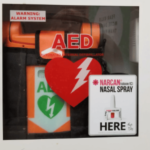
Author: Marcy Burnham
A DNR order is a legal document stating that a person does not want to receive cardiopulmonary resuscitation (CPR) if their heart stops or if they stop breathing. Traditionally, these orders are documented in medical records and often accompanied by physical forms or bracelets. However, some individuals have opted for a more permanent and visible method: tattoos. While the intent behind these tattoos is clear—to convey the individual’s wish not to be resuscitated in the event of a medical emergency—their legal standing and the responsibilities of medical professionals in such scenarios are complex and often uncertain.
People who choose DNR tattoos may do so for several reasons:
- They believe it offers a clear and immediate way to communicate their wishes.
- They want to ensure that their wishes are respected even in situations where traditional documentation might not be readily accessible.
- They seek to avoid the physical wear or loss associated with other forms of DNR documentation.
The legal implications of DNR tattoos vary widely and are often unclear:
- In most jurisdictions, a tattoo is not legally recognized as a valid DNR order. Legally binding DNR orders usually need to be documented through specific forms signed by the patient and a physician.
- Medical professionals who choose to follow the instruction of a DNR tattoo without proper legal documentation risk potential legal repercussions. If a patient or their family contests the decision, it could lead to legal action against the healthcare provider or institution.
- There have been instances where the presence of a DNR tattoo has led to legal and ethical debates. For example, a case in Florida saw medical personnel honor a man’s DNR tattoo, but only after consulting with legal and ethical advisors. This case highlighted the complexities and potential for varied responses based on individual circumstances and interpretations.
Given the current legal landscape, individuals considering a DNR tattoo and healthcare providers should consider the following:
- Individuals should ensure they have legally recognized DNR documentation in addition to any tattoo. This can include forms filed with their healthcare provider and accessible to emergency personnel.
- It’s important for individuals to communicate their wishes with family members, healthcare proxies, and their primary healthcare providers to ensure everyone is aware of and understands their intentions.
- Healthcare institutions should develop clear policies and training for staff on how to handle situations involving DNR tattoos. This can include protocols for seeking legal and ethical guidance in emergencies.
DNR tattoos raise significant legal and ethical questions that challenge the traditional processes of medical decision-making. While they can be a powerful expression of personal autonomy, the lack of legal recognition and the potential for misinterpretation mean that they should not be relied upon in isolation. Individuals should ensure their end-of-life wishes are documented through legally recognized means, and medical professionals must navigate these situations with careful consideration of both ethical principles and legal obligations. The conversation around DNR tattoos highlights the need for ongoing dialogue and clarity in the intersection of personal rights, medical ethics, and legal standards.
Office: (205) 417-4711
Email: info@aed365.com






